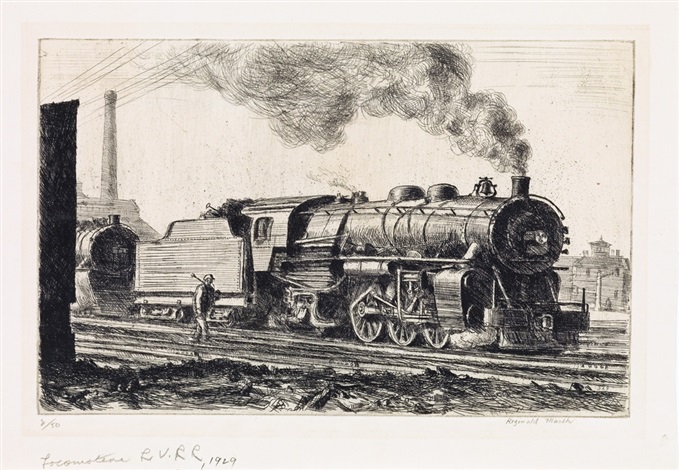Known for his images of gritty New York from the beaches to burlesque halls, a new collection being shown at the University of Connecticut's William Benton Museum is spotlighting the rarely seen train-related work of artist Reginald Marsh.
On exhibition through Dec. 18, 2016, Steaming Ahead: Reginald Marsh Watercolors of Locomotives in the Permanent Collection of the William Benton Museum of Art showcases more than 25 of the painter's works including watercolors, lithographs and etchings.
Produced between 1927 and 1934, along with one piece from 1940, the pieces are from the permanent collection of the museum and are available for viewing in person at the museum or online via a virtual exhibition.
Primarily a watercolorist, Mash's earliest work was etchings. He was fascinated by the process, but worked almost exclusively in watercolor from the early 1920s until 1929.
"Steam locomotives by their nature are accessible to the senses," steam train expert Audrey Conrad says. "When you see one move, all of the parts are right out there in the open, you can see the rods moving and turning the wheels; you can feel the heat of the boiler and steam; you can smell the coal smoke and hot oil. At the time he was painting them, steam locomotives were not obsolete: they were the prevailing type of motive power in the U.S. and the world."
Because Marsh focused on steam locomotives, it is thought that the Erie Railroad terminal in Jersey City, New Jersey, was his favorite spot, given its proximity to his New York City studio.
Among the pieces are:
* Locomotive from 1929. Showing a lone locomotive without its tender, this view could have been provided from Marsh's access to unoccupied areas of the trainyards.

* Switch Engine LVRR from 1931. The etching depicts a Lehigh Valley Railroad Switch Engine class L-5 "camelback" locomotive built in 1916.

* The Parlor Car, painted in 1940, depicts one of Marsh's "sirens" - beautiful young women for which he is best known - along with the rotating chairs of the parlor car.
* The undated Railroad Engine and Passenger Car is a watercolor of the Central Railroad of New Jersey class J-1 2-6-2T type locomotive built in 1902 and used until the 1940s.

